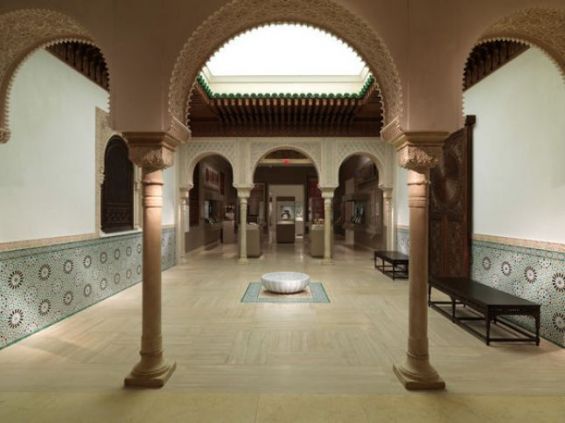In November 2011, the Metropolitan Museum of Art opened its new art galleries in Arab countries as well as in Turkey, Iran, Central Asia and later South Asia, housing its collection of Islamic art. Among the vital parts of this installation is the Patti Cadby Birch Court, a Moroccan courtyard built by a team of experts, curators, historians, designers and craftsmen over several months.
In addition to the works on display, which span the last fourteen hundred years, the Moroccan Court offers an experience of space and architecture while demonstrating artistic traditions that still thrive in the Islamic world, described a report from the MET, entitled «Building the Moroccan Court». A video that «documents a wonderful trip from Fez to New York and the creation of a 21st century courtyard using traditional 15th century methods».
An achievement that was made possible thanks to the Patti and Everett B. Birch Foundation. «But in a reversal typical of our age, while the contemporary art in our largest museums seems at an ahistorical remove, the historical once again feels bracingly contemporary. When, on 1 November 2011, the Met reopened its Islamic galleries», said Jason Farago, American art critic, in an article published by Frieze magazine .
In fact, «in reaching out to Moroccan architect Adil Naji and his network of artisans to develop the new Moroccan Court, the Metropolitan Museum of Art developed a fascinating permanent installation that elevates the New Galleries for Art of the Arab Lands», wrote the Dwell.
A tribute to two Madrasas of Fez from the 14th century and to Merinid art
The same source reveals that while most of the wing is set up as an exhibition of objects, the Moroccan Court, completed in nine months, is on the other hand «an example of what museums can do using global connections : create an encapsulating installation that transports visitors across the world and 500 years ago».
«In his recreation of this important social space as it would appear in the 14th century, white light passes through the center of the ceiling, giving the impression of natural light and open air; tiles on the walls are arranged in a scientific manner demanding an acute understanding of mathematics, while the freehand plaster carving of the arches surrounding the space are floral and flowing», it reveals.

Speaking to the Dwell, the Moroccan architect highlighted the different skills required for each facet of his design implementation, expressing his appreciation for the fifteen Moroccan artisans he worked with - including his own brothers - who each have more than a decade of experience in their respective trade.
In fact, this gallery is a combination of acquired works and contemporary know-how, explained the Met Museum blog. The New York Museum indicate that it is «four freestanding Nasrid-period columns hail from the Alhambra, while the walls, the remaining columns, and the ceiling were constructed onsite by Arabesque, a company of Moroccan craftsmen». Their design is inspired by two Madrasas of Fez from the 14th century : Al Attarin and Al Bu-'Inaniyya, both built during the reign of the Merinid sultans.





 chargement...
chargement...













